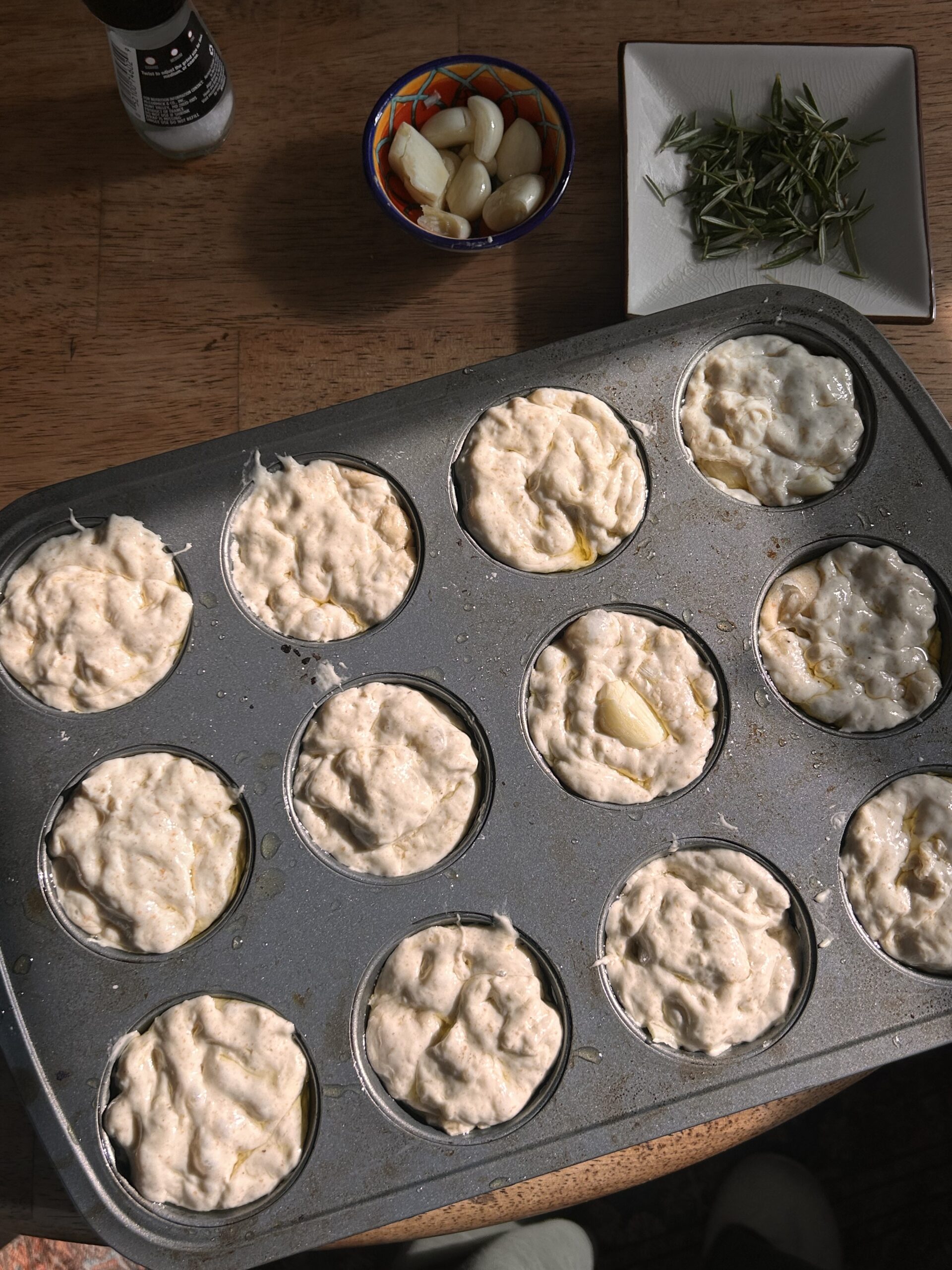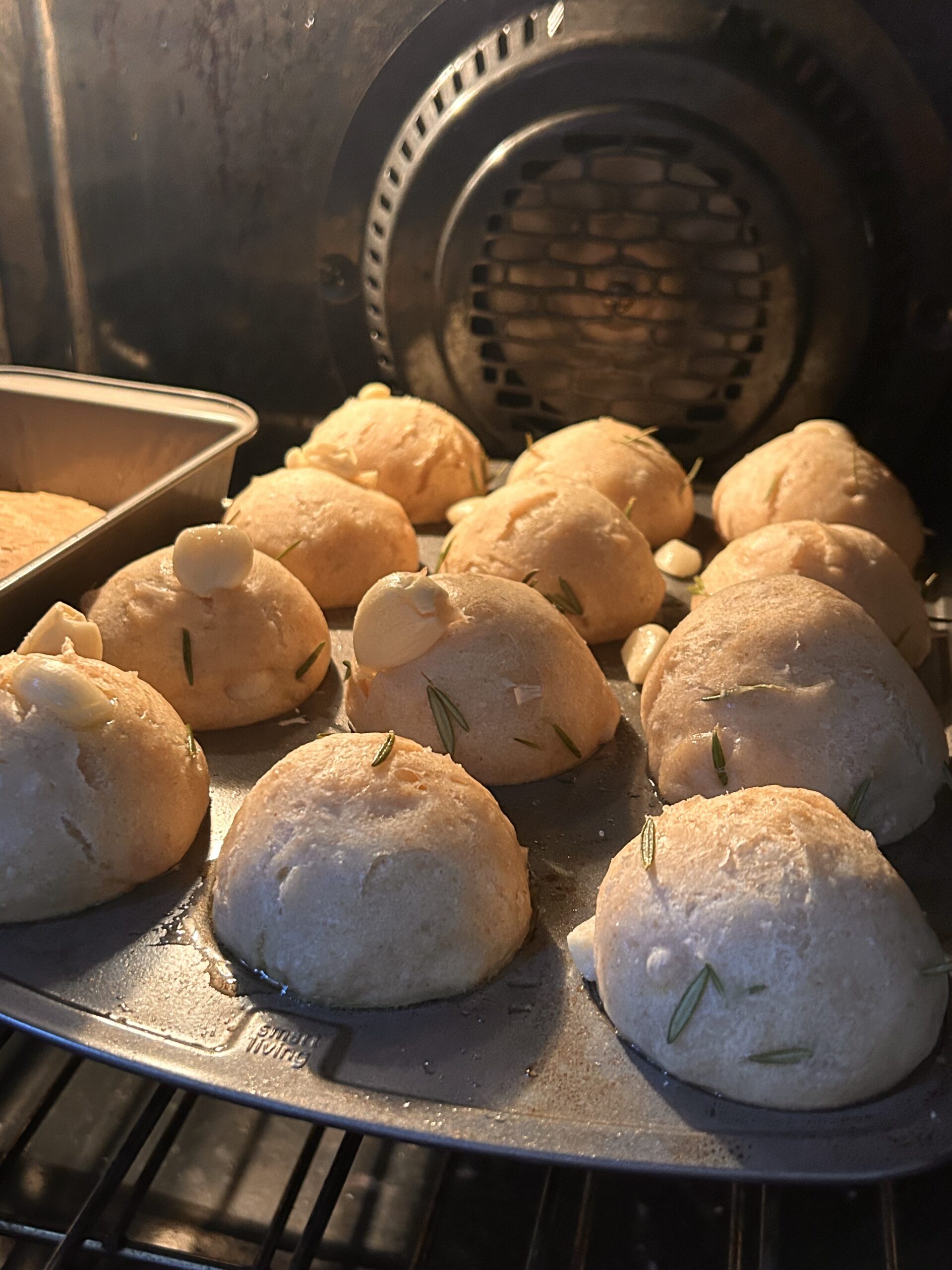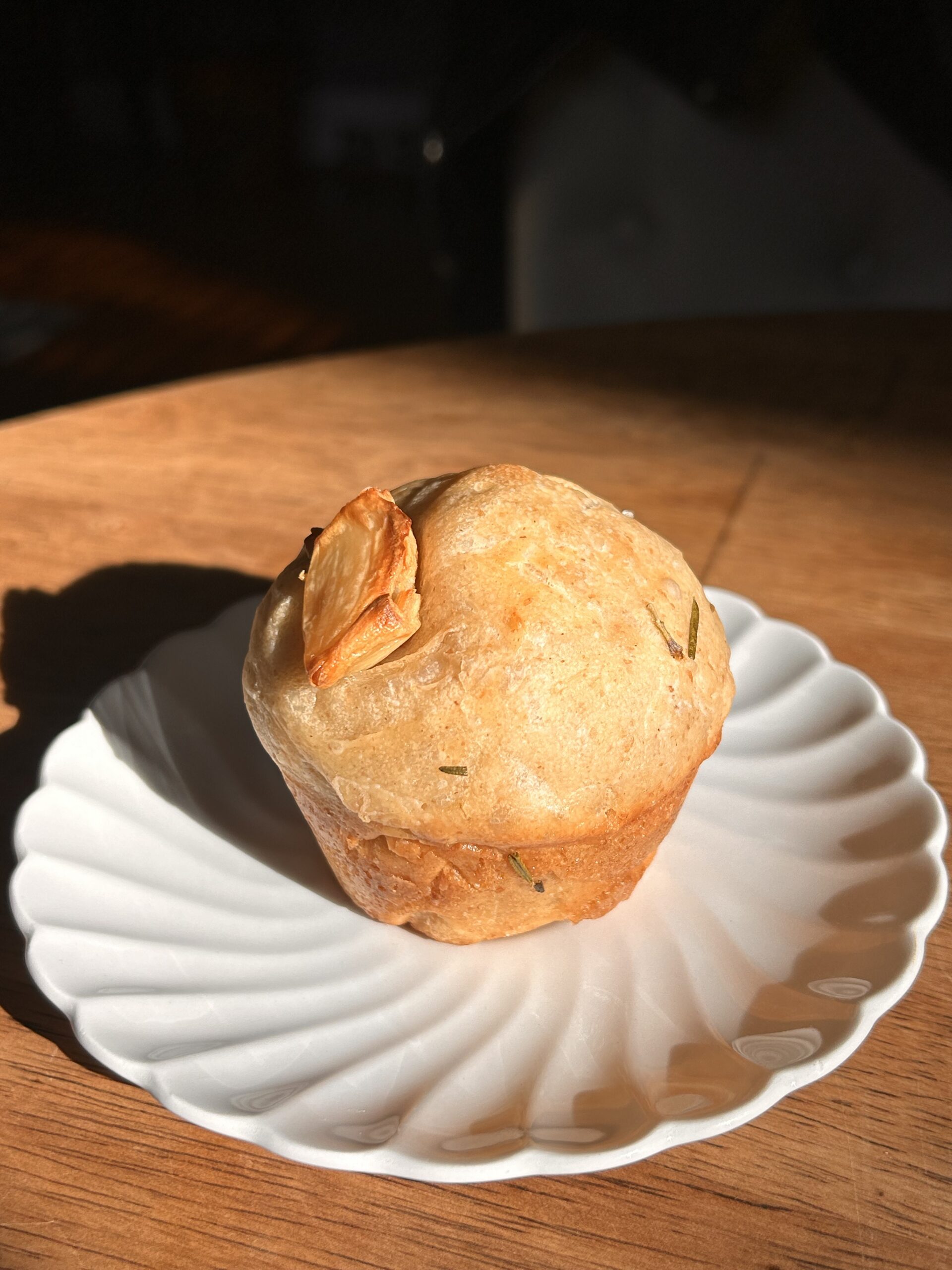Because Mini Bread IS GOOD
I had no idea what to expect when I scooped my sourdough focaccia dough into a muffin tin. Maybe something cute, maybe something crispy—but definitely not these golden, puffy, perfectly chewy little bread bites that came out of my oven.
The edges get crisp, the insides stay fluffy, and because they’re mini, they’re basically pre-portioned perfection. They’re just as olive oil-soaked and dimpled as classic focaccia, but in a form that’s way easier to grab for breakfast, snack on mid-day, or turn into little sandwiches.
Plus, you can switch up the toppings—rosemary and garlic are my go-to, but caramelized onions, cheese, or even sun-dried tomatoes? Elite choices. Trust me, once you try these, you’ll be making them on repeat.

Ingredients
Dough:
- 405g water
- 105g ACTIVE starter
- 400g bread flour
- 50g whole wheat flour
- 60g all-purpose flour
- 10g salt
- 15g olive oil (mixed into dough)
Topping:
- 50g olive oil
- 20g sea salt
- 1 tbsp fresh or dried thyme or rosemary

Instructions
Mixing the Dough
- In a large mixing bowl, combine the sourdough starter and water. Stir briefly until mixed.
- Add the bread flour, whole wheat flour, all-purpose flour, and salt. Mix everything together until a sticky dough forms. Ensure there are no dry spots of flour.
- Cover the bowl with plastic wrap or a damp tea towel and let it rest for 1 hour. This is the autolyse stage, helping gluten development.
Strengthening the Dough
- After autolyse, strengthen the dough by performing stretch and folds:
- Grab the dough from the edge, stretch it upwards, and fold it over itself toward the center.
- Repeat this around the bowl 10-15 times. The dough should feel stronger and more elastic.
- Cover and let it rest for bulk fermentation.
Bulk Fermentation
- Let the dough ferment until it increases by about 30% in volume. Do not over-ferment, as shaping individual portions will be harder if the dough is too sticky.
Shaping the Muffins
- Prepare the muffin tin: Drizzle about 1 tsp olive oil into each cavity of a 12-hole muffin tin.
- Lightly oil your hands and your work surface.
- Turn the dough out onto the counter and use a metal dough scraper to divide it into 12 equal portions.
- Place each portion into a muffin cavity, gently pressing it down. It will spread more during the second rise.
Second Rise
- Cover and let the dough rise again until it becomes pillowy, bubbly, and puffy. This will take a few hours depending on the temperature and strength of your starter.
Topping & Dimpling
- Drizzle a little olive oil over each muffin.
- Use your fingertips to gently dimple the dough, creating small pockets for the toppings.
- Sprinkle sea salt and add thyme or rosemary over each muffin. Press toppings gently into the dough.
Baking the Sourdough Focaccia Muffins
- Preheat your oven to 400°F (200°C).
- Bake for 25-30 minutes, or until golden brown all over, including the bottom.
- Once baked, transfer the muffins to a wire rack to cool.
Iski Note
Savory Variations
- Kimchi Focaccia Muffins: Fold finely chopped kimchi into the dough or place a small spoonful on top before baking for a tangy, slightly spicy twist.
- Miso & Scallion Focaccia Muffins: Mix a teaspoon of white miso paste into the olive oil before dimpling the dough, then top with chopped scallions for a deep umami flavor.
- Cheesy Focaccia Muffins: Sprinkle shredded parmesan or mozzarella on top before baking for a crispy, golden cheese crust.
- Garlic Butter Focaccia: Brush with melted garlic butter right after baking for extra richness.
Sweet Variations
- Cinnamon Sugar Focaccia Muffins: After baking, brush the tops with melted butter and roll them in a cinnamon sugar mixture for a sweet, crispy crust.



Why this recipe hits
This focaccia muffin recipe delivers the crispy, golden crust and pillowy inside that makes focaccia so good, but it works two ways—with sourdough or instant yeast—so you can choose what fits your schedule.
Why It Works for Sourdough
- Deep flavor: The slow fermentation gives the dough a rich, tangy taste.
- Chewy, airy texture: The long rise develops strong gluten structure, creating a soft inside with crisp edges.
- Naturally leavened: No commercial yeast, just time and a healthy sourdough starter.
Why It Works for Instant Yeast
- Faster rise, same flavor: Ready in hours instead of overnight, but still has the same olive oil-rich, dimpled texture.
- Beginner-friendly: No need for a starter or long fermentation—just mix, let it rise, and bake.
- Reliable and consistent: Instant yeast gives predictable results every time.
Both versions bring great flavor and texture—it just depends on your timeline. If you have time to let your dough sit overnight, go with sourdough. If you need fresh focaccia muffins by dinner, instant yeast gets you there faster. Either way, they come out crispy, chewy, and packed with flavor.
